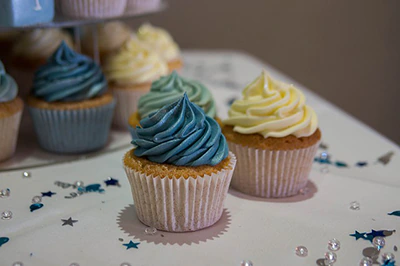| Additive Summary | Indigotine (E132) |
|---|---|
| Essence | Indigotine (E132) is an organic compound naturally found in certain plants which are used to create the blue color. That said, it’s technically a synthetic color since it’s made purely by synthetic means, commercially. |
| Names | Indigotine, E132, Indigo Carmine, FD&C Blue No. 2, Food Blue 1, CI 73015, 860-22-0, 212-728-8, INS No. 132, and others. |
| Sourcing | This color is naturally found and can be extracted from the leaves of Indigofera tinctoria, Isatis tinctoria, or Indigoferasuifruticosa. However, for commercial use, since the beginning of the 20th century, it’s typically created synthetically from N-phenylglycine (created from aniline and formaldehyde) or N-(2-carboxyphenyl)glycine. |
| Manufacturing | For the natural way, indican (a glycoside of indoxyl) is extracted from Indigofera tinctoria, Isatis tinctoria, or Indigoferasuifruticosa. Indican is then mixed with an enzyme known as indimulsin to create indoxyl and glucose. Indoxyl is then exposed to air which converts it to indigo. Sulphonation of indigo (heating it in the presence of sulphuric acid) creates the Indigo Carmine. For the synthetic way, either the N-phenylglycine or N-(2-carboxyphenyl)glycine undergoes alkalization to create indoxyl. The latter compound is then oxidized in the air for the creation of indigo. Another way to do it is to ammonia pressurize N-phenylglycine in a molten fusion of sodamide, sodium hydroxide, potassium hydroxide. This creates indigo which is isolated and undergoes purification. The FD&C Blue No. 2 is then produced by sulphonation of the compound. The outcome of that is purified. |
| Application | Coloring (blue to blue-brown to blue-red, very water-soluble). |
| Acceptable Daily Intake | It’s said to be fine for use in amounts up to 5 milligrams on every kilogram of body weight. But that’s questionable. Ideally, we shouldn’t ever consume the FD&C Blue No. 2 given how it’s commercially produced. |
| Side Effects | In medicine, it is used as a diagnostic agent to detect amniotic fluid leaks or to aid in urologic surgeries since it colors urine blue. But it is known to problems with blood pressure (dangerous increases of it). Other dangers of it stem from the fact that it’s an artificial color (the most prominent one likely being cancer). This blue coloring has been banned in Norway. |
| Benefits | None. |
| Studies | 1,600+ studies on Pubmed. And 60+ studies on safety. |
| Allergens | None. |
| Diet Restrictions | None. |
| Assessment (As An Additive) |
Harmful. | Category 4 Additive. |
| Products | It is used in processed foods like candies, sweets, chocolate, chewing gum, cupcakes, breakfast cereals, pastries, cakes, frozen treats, dairy products, food decorations, seasonings, sauces, marzipan, biscuits, jellies, and others. |



